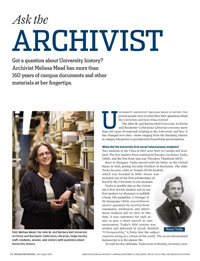Features
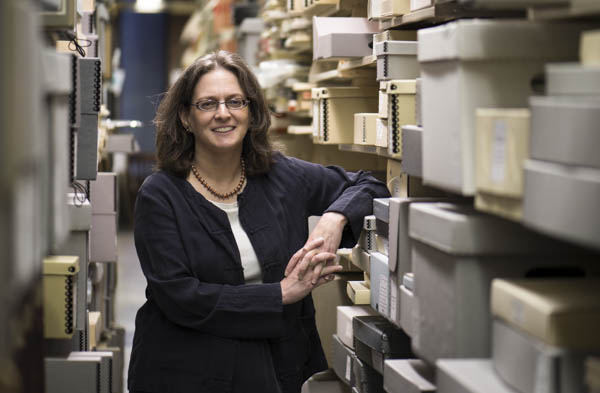 FAQ: Melissa Mead, the John M. and Barbara Keil University Archivist and Rochester Collections Librarian, helps faculty, staff,
students, alumni, and visitors with questions about University history. (Photo: Adam Fenster)
FAQ: Melissa Mead, the John M. and Barbara Keil University Archivist and Rochester Collections Librarian, helps faculty, staff,
students, alumni, and visitors with questions about University history. (Photo: Adam Fenster)University archivist Melissa Mead is often the person people turn to when they have questions about the University and how it has evolved.
The John M. and Barbara Keil University Archivist and Rochester Collections Librarian oversees more than 160 years of materials relating to the University and how it has changed over time—items ranging from the founding charter to campus blueprints to presidential PowerPoint presentations. When did the University first enroll international students?
Two students in the Class of 1853 were born in Canada and Scotland. The first student from continental Europe was Simon Tuska (1856), and the first from Asia was Theodore Thanbyah (1871).
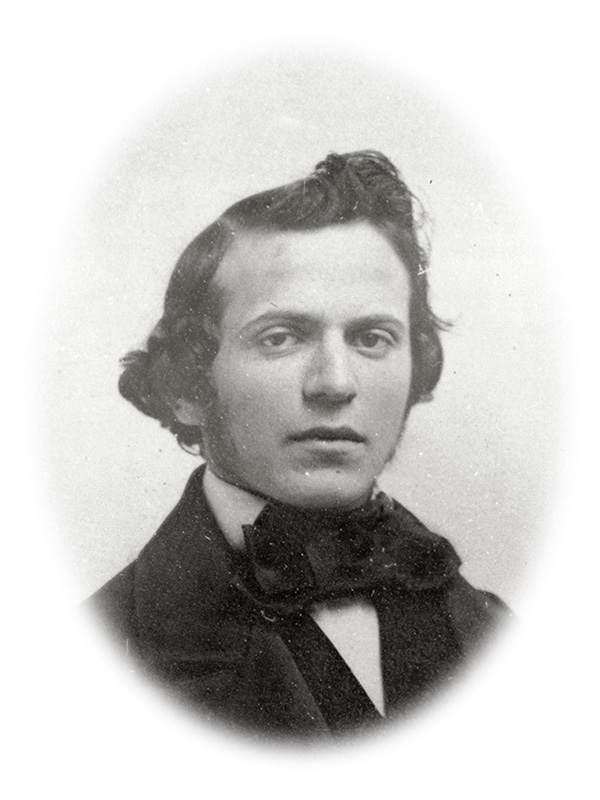 Simon Tuska (Photo: University Libraries/Department of Rare Books, Special Collections, and Preservation)
Simon Tuska (Photo: University Libraries/Department of Rare Books, Special Collections, and Preservation)Born in Hungary, Tuska moved with his father to the United States in 1850, joining his older brothers in Rochester. The elder Tuska became rabbi at Temple B’rith Kodesh, which was founded in 1848. Simon was awarded one of the first scholarships offered by the University to city students.
Tuska is notable also as the University’s first Jewish student and as our first student (or alumnus) to publish a book. His pamphlet, A Stranger in the Synagogue (1854), was written to answer questions he received from classmates, professors, and others about Judaism and its rites. At this time, it was customary for each senior to give a short speech at commencement; Tuska’s 1856 oration was written and delivered in Greek. Entitled “Ο Κοσμοπολίτς,” it hints that the subject concerns acting as a citizen of the world. The as-yet untranslated manuscript is in his alumni file.
To train for the rabbinate, Tuska went to Breslau, Germany (now Wrocław, Poland), and is thought to be the first American to study abroad for that purpose. Tuska believed that Jews of his generation, raised in America, would expect their rabbis to preach in English; upon his return to the United States, he gave sermons in Rochester and New York, and then found a receptive congregation in Memphis, Tenn., where he served until his death in 1870 at the age of 35
.
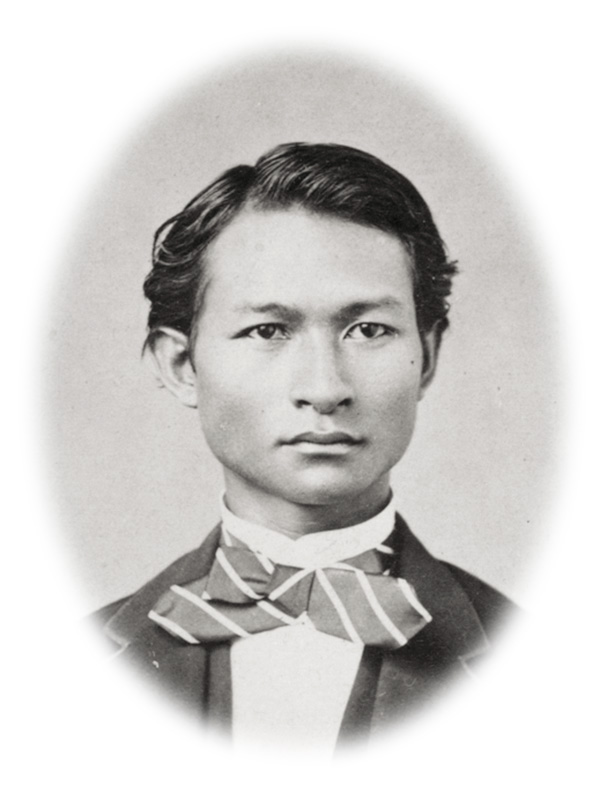 Theodore Thanbyah (Photo: University Libraries/Department of Rare Books, Special Collections, and Preservation)
Theodore Thanbyah (Photo: University Libraries/Department of Rare Books, Special Collections, and Preservation)Theodore Thanbyah, Class of 1871, traveled from Burma to attend the University. Baptist missionaries, including the father of Willard Abbott, Class of 1858, worked in Bassein (now known as Pathein, Myanmar), where Thanbyah was born among the Karen minority. In the United States, Thanbyah first enrolled at Shurtleff College, a Baptist institution in Upper Alton, Ill., for some preparatory studies, and entered the University in September 1868, at the age of 26. After graduation, Thanbyah attended the Rochester Theological Seminary. In 1874, he returned to Burma to become a pastor, a municipal commissioner, a teacher, and president of the National Karen Association. Thanbyah was profiled in Review in 2012, and several offers have been received to provide English translations of his autobiography.
Frederick Douglass and Susan B. Anthony are such prominent figures in University history: who were our first African-American and female graduates?
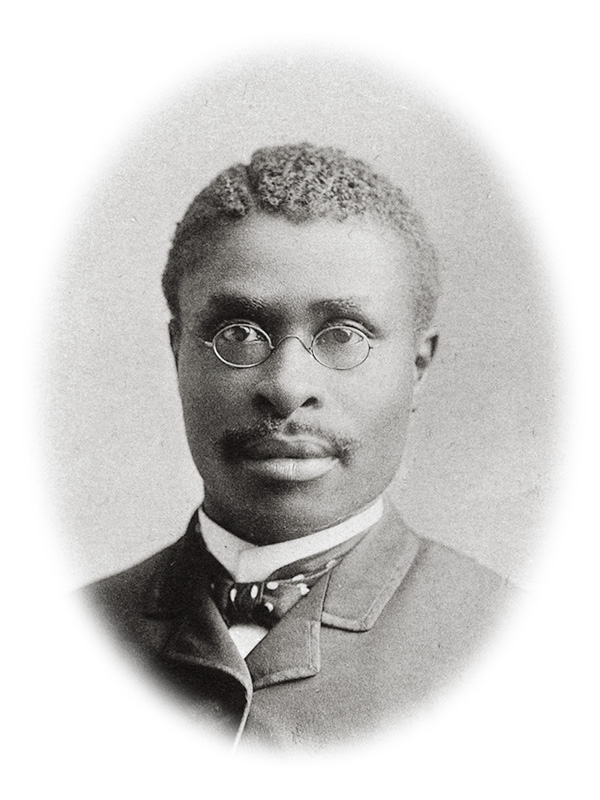 Charles Augustus Thompson (Photo: University Libraries/Department of Rare Books, Special Collections, and Preservation)
Charles Augustus Thompson (Photo: University Libraries/Department of Rare Books, Special Collections, and Preservation)Charles Augustus Thompson is believed to be the first African-American to graduate from the University, as a member of the Class of 1891. In a survey of seniors in the Campus (forerunner of the Campus Times), he was one of only three students (out of a class of 34) to wholly support his own education. After graduating, Thompson studied theology in Memphis and then served as principal of the Porter School there from 1892 to 1907. He continued to study—at the Howe Institute, at Howard Medical College, and at Central Chiropractic College—and to teach, and later preach, as pastor of the Fairmount Heights Presbyterian Church in Washington. He also was a chiropractic practitioner. Thompson died in Washington, D.C., in 1934.
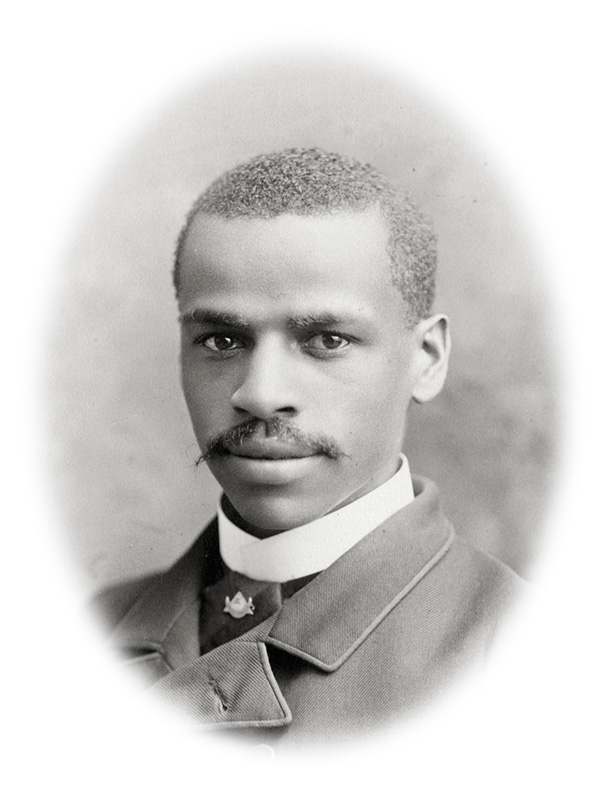 Henry Spencer (Photo: University Libraries/Department of Rare Books, Special Collections, and Preservation)
Henry Spencer (Photo: University Libraries/Department of Rare Books, Special Collections, and Preservation)On the registrar’s lists for the class of 1885 was Henry Spencer. Enrolling as a freshman at age 26, Spencer attended for four years; for reasons as yet unclear, he was not granted a degree. Spencer is listed in the 1885 Interpres as “class poet” and in a Campus report on the activities of senior week, Spencer offered one of the toasts during the class dinner at the Powers Hotel. The class prophecy predicted that “Spencer [would give] the strength of his life to the service of his race. As in college so in after life . . . conscientious, faithful, and successful.” By 1888, Spencer was named a committeeman-at-large at the Republican City Convention; he would later work as a clerk in the New York Assembly Speaker’s office in Albany for 31 years. He died in Rochester in 1935.
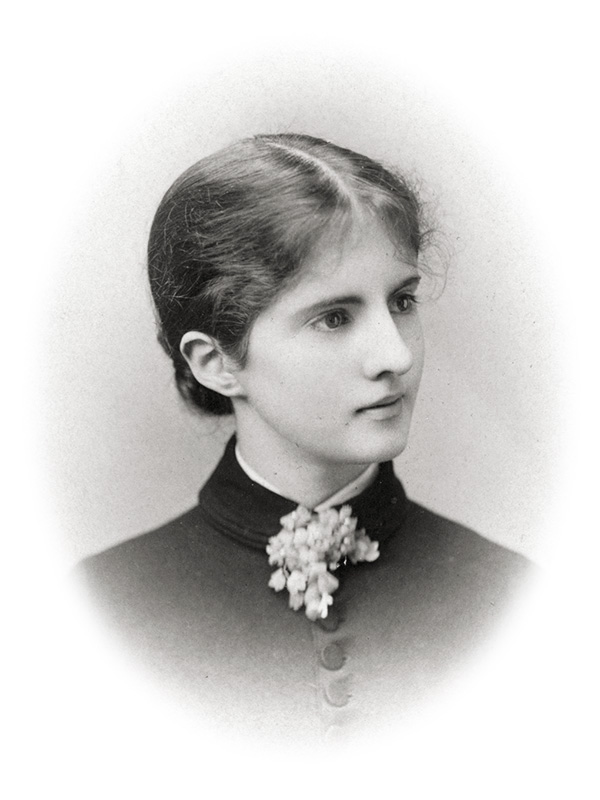 Ella Salome Wilcoxen (Photo: University Libraries/Department of Rare Books, Special Collections, and Preservation)
Ella Salome Wilcoxen (Photo: University Libraries/Department of Rare Books, Special Collections, and Preservation)Our first female graduate was Ella Salome Wilcoxen, Class of 1901. Wilcoxen was in her mid-30s when she applied to be admitted as a senior, and according to faculty meeting minutes from September 17, 1900, a special faculty committee was formed to approve her request. Rather than examine a transcript (if she submitted one), the committee advised Wilcoxen “to present, in person, her application blank for advanced standing to the different members of the faculty and get their official endorsements.”
By September 21, when the special committee met, it appears that the necessary endorsements had been obtained, and the committee gave its approval.
U.S. Census records report her living in Macedon, N.Y., with her parents and siblings and younger brother, Wilfred, who preceded his sister at the University, and graduated in 1899. After graduation, she continued her studies, attending Illinois Wesleyan University from 1903 to 1905. By 1920, she was seeking employment as a teacher, and a letter of reference in her alumna file describes her as appearing to be “a woman of force in character.” The only photograph we have of Wilcoxen was probably made prior to 1900, as she appears younger than she would have been when she attended the University. She died in 1933.
Is the origin of the Yellowjacket name connected to the presence of wasps at Oak Hill, or because our players wore yellow?
“A Buffalo player on Saturday called the Varsity, ‘Yellow Jackets,’ not because of their equipment, but rather their sting.” J. Howard Garnish ’27 probably* reported this in the November 5, 1926, Campus, and so the legend was born. The following week Garnish christened the team officially, writing, “Go to it, you Yellow Jackets! On to Rensselaer!” (We shut out Buffalo, 32–0, and trounced RPI 47–6.)
The 1926 date is significant: Oak Hill was transformed into the River Campus in 1930, and was not reported as harboring a large insect population. Yellow was chosen as a school color in 1893, and has its “roots” in the dandelions found on Azariah Boody’s pasture land, which became the Prince Street Campus in 1861, and remains the home of the Memorial Art Gallery.
* The comment appeared in an unsigned boxed editorial paragraph; the following week he signed it with his initials.
Do you have a question about University history? Email it to rochrev@rochester.edu. Please put “Ask the Archivist” in the subject line.

